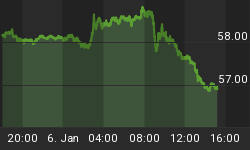12/1/2010 9:09:51 AM
The typical increased volume to square positions at the end of the month saw a test lower to key support levels and then a bounce. The bulls appear ready to run...
Recommendation:
Buy shares of DIA at a limit of $110.75
Buy shares of QQQQ at a limit of $52.38
Buy shares of SPY at a limit of $119.15
Daily Trend Indications:

- Positions indicated as Green are Long positions and those indicated as Red are short positions.
- The State of the Market is used to determine how you should trade. A trending market can ignore support and resistance levels and maintain its direction longer than most traders think it will.
- The BIAS is used to determine how aggressive or defensive you should be with a position. If the BIAS is Bullish but the market is in a Trading state, you might enter a short trade to take advantage of a reversal off of resistance. The BIAS tells you to exit that trade on "weaker" signals than you might otherwise trade on as the market is predisposed to move in the direction of BIAS.
- At Risk is generally neutral represented by "-". When it is "Bullish" or "Bearish" it warns of a potential change in the BIAS.
- The Moving Averages are noted as they are important signposts used by the Chartists community in determining the relative health of the markets.
Current ETF positions are:
In cash.
Daily Trading Action
The major index ETFs opened lower and moved down in the first fifteen minutes to find an intraday bottom before reversing to move higher for the next forty-five minutes. From there, each index had its own personality with the Dow making its way into positive territory in the early and mid-afternoon but never for very long and getting weaker in the late afternoon trading. The S&P-500 Index ETF (SPY) was able to close the morning gap in the early afternoon before reversing lower for the rest of the session. The NASDAQ-100 ETF (QQQQ) were never able to battle their way back up to that early morning highs but also never broke below the intraday low found in the first fifteen minutes. Still, the NASDAQ-100 was the relative weakest index and the Dow was the strongest for the day. The Semiconductor Index (SOX 390.12 -5.03) finished -1.3% lower. The Russell-2000 (IWM 72.75 -0.58) posted only a fractional loss suggesting the risk trade is still on. The bank indexes moved lower with the Bank Index (KBE 22.26 -0.15) posted a fractional loss while the Regional Bank Index (KRE 22.52 -0.31) lost nearly one and one half of one percent. The 20+ Yr Bonds (TLT 99.41 +0.51) posted a gain of about one half of one percent but had opened some +1.3% and did nothing but lose ground from the open. While it is still above its 20-Day Moving Average (DMA) and its 200-DMA, the move higher seems to have stalled. NYSE volume was heavy with 1.535B shares traded. NASDAQ volume was heavy with 2.320B shares traded.
The economic report of interest released was the Consumer Confidence Index, which improved to 54.1 from 49.9 in October. This helped the markets to rally on its release around 10:00am.
The U.S. dollar (+0.6%) continues to add to gains but closed just under resistance and could struggle here. A move lower would likely allow equities to move higher which is what we have been waiting for to enter long positions.
Implied volatility for the S&P-500 (VIX 23.54 +2.01) 21.53 -0.69) rose nine percent as did the implied volatility for the NASDAQ-100 (VXN 25.39 +2.11).
The yield for the 10-year note fell two basis points to close at 2.80. The price of the near term futures contract for a barrel of crude oil fell $1.62 to close at $84.11.
Market internals were negative with decliners leading advancers 21 on both the NYSE and the NASDAQ. Down volume led up volume 7:4 on the NYSE and by 3:1 on the NASDAQ. The index put/call ratio fell 0.06 to close at 1.35. The equity put/call ratio fell 0.13 to close at 0.58.
Commentary:
Tuesday's trading saw heavier volume arise from squaring positions at the end of the month. The U.S. dollar's continued move higher finally saw a crack in the façade as the dollar was held below key resistance and closed the session essentially where it began leaving behind a doji candlestick which signals indecision on the part of traders. If the dollar begins to retreat, equities traders will likely seize the opportunity to drive equities prices higher.
This is the opportunity we have been waiting for but a large gap open means that we will want to enter long positions with limit orders. While we see a bullish divergence between price and a key indicator we monitor, there is still room for another test lower before the bulls can claim victory and drive equities in a new bullish advance.
We hope you have enjoyed this edition of the McMillan portfolio. You may send comments to mark@stockbarometer.com.
















